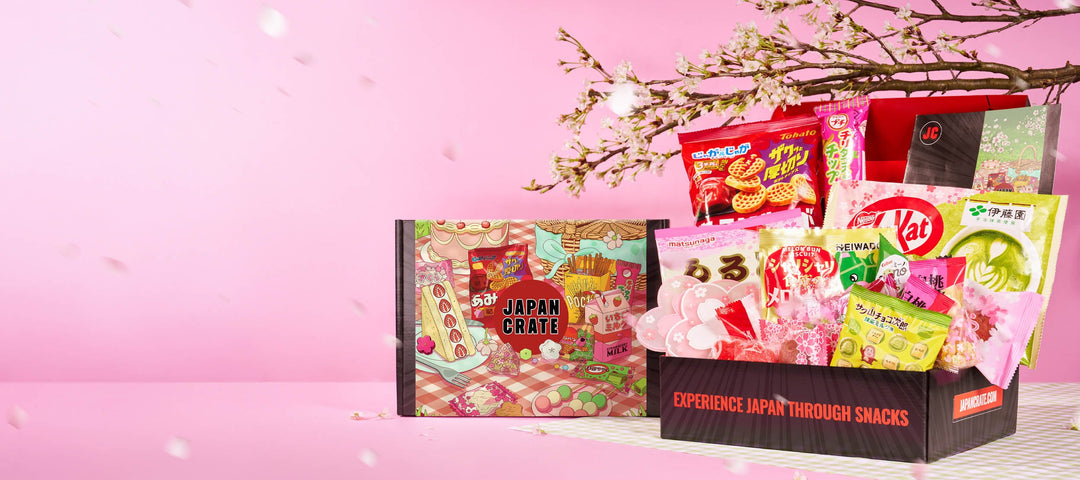History of Japanese Noodles

In Japan, ramen noodles are not taken lightly. It is unquestionably one of Japan's most well-known meals when it comes to Japanese cuisine. A way of life, in fact! These noodles are a traditional staple, available in a large variety of instant ramen options and specialty stores. Over the years, ramen has developed independently on its own.
And for this reason, each region or prefecture has a distinctive method for preparing its own regional ramen. Indeed, ramen variation is one of its key attributes. Noodles, toppings, and broths all come in a wide variety, allowing for countless possible combinations.
Udon's smooth but firm texture, the distinct aroma of soba, and the delicate flavor of women(wheat flour noodles). These have different ingredients, and noodles thickness used that affect the flavor and texture of the noodles. You can have freshly cooked dried noodles whenever you'd like because they're simple to store at room temperature. But how did these amazing Japanese noodles start?
What is the history of Japanese Ramen Noodles?

Japanese ramen is a well-liked noodle dish that many people throughout the world enjoy. Although ramen is now widely recognized as a Japanese dish, its origins are in China. During the Meiji Period, Chinese immigrants brought it to Japan. Chinese noodles in broth with Chinese-style pork were originally used to make it.
The dishes Chuka soba and Shina soba originally shared the same name. They both refer to "Chinese style noodles," but in distinct ways. Chinese noodles are typically seasoned with salt since Southerners are used to seasoning with salt, while boiling pork bones or chicken bones soupy broth are more common. Until the country underwent an industrial revolution at the end of the 19th century, wheat noodles were eventually seasoned with soy sauce to appeal to Japanese local tastes, giving rise to Japanese noodles. Therefore, the so-called Japanese ramen is a Chinese noodle prepared in Japan using Chinese pasta.

Following then, the Japanese kept creating and enhancing the traditional Japanese version ramen. It has developed into a distinct Japanese-flavored variety of noodles. Japan has created numerous varieties of ramen throughout the years, with the sole notable variation being the broth, which spans from shio ramen (salted) to tonkotsu (pork broth). Conversely, the wavy noodles' firm texture and yellow hue are still achieved using kansui. The ramen was not only created by the Japanese, but its popularity has spread throughout the entire world.
Different Types of Japanese Ramen

Japan offers more than just ramen. Ramen has undoubtedly won over hearts and stomachs everywhere, but it is nowadays presented in several types and flavors. There are already over 30 different regional ramen (gotouchi ramen) variations in Japan. Each variation blends one or more traditional soup bases, including , shoyu, shio, miso, and tonkotsu ramen. A particular bowl of ramen can also be made using regional ingredients and noodles with a certain form and texture. Here are some mouthwatering Japanese ramen noodle dishes you'll ever have.
1. Sapporo Ramen

Sapporo, the city of Japan's northernmost prefecture of Hokkaido, is renowned as the origin of miso-style ramen. This ramen uses a miso soup flavored with ginger, green onion, garlic, and roasted pork and is often paired with more unusual, especially local toppings like Hokkaido butter and sweet corn. A slice of pork belly and a mound of bean sprouts give the dish some protein and a bite of freshness.
As if that wasn't enough, Sapporo Ramen is topped with a layer of lard, keeping the temperature of the soup piping hot. Additionally, to make this local specialty, fragrant soybean paste is sauteed together with ginger and garlic and mixed with hearty pork flavor bowl of ramen that hits the spot on even the coldest winter days.
2. Hakata Tonkotsu Ramen

Hakata ramen is a thick, creamy dish from Fukuoka city in Kyushu. The Hakata ramen, well-known throughout Japan, has thin noodles with braised pork, chewy, crunchy kikurage, spicy mustard greens, pickled ginger, green onions, sesame seeds, and crushed garlic on top. It is created with pork bones that are boiled at a high temperature until they release their collagen and produce a rich, milky broth flavor with seafood stock.
Also, it's customary to request a second serving of noodles, known as kaedama, if you eat the noodles quickly. Hakata ramen or tonkotsu ramen originated in Kyushu, but it has now expanded throughout Japan and many other nations.
3. Wakayama Ramen

In Wakayama Prefecture, the Wakayama ramen is also known as "Chuka Soba" (Chinese noodles) and is primarily divided into 2 main forms based on the soup. There is a tonkotsu shoyu base, while the other has a light shoyu hot broth soup. However, the major flavor is still pork bones and shoyu.
Furthermore, the thin, straight noodles with green scallions, a piece of the pink-and-white naruto fish cake, marinated bamboo shoots, char siu, boiled egg, and kamaboko are on top of traditional Japanese fish paste products. In addition, haya-sushi, a classic Kansai-style pressed sushi prepared with pickled mackerel, is frequently served alongside bowls of Wakayama ramen.
4. Kitakata Ramen

The Kitakata region of northern Fukuoka is famous for its hand-cut noodles and is known for its ramen prepared with fat, wavy egg noodles. It is served with basic toppings, including a few pieces of chashu pork, bamboo shoots, and naruto. In contrast to other ramen types, this one contains thicker noodles and a soy sauce base.
Typically, sardines and tonkotsu pork bone broth are used to flavor kitakata ramen (niboshi). A bowl of Kitakata ramen matches many Japanese people's ideal conception of what ramen should look like, even though the components may appear very simple.
5. Tokyo Ramen

Japan has a wide variety of ramen establishments, and each ramen shops either tweak the original recipes to suit their tastes or invents an entirely new and distinctive type. The most iconic type of traditional Japanese ramen is Tokyo Ramen, which has thick, curly noodles and a shoyu soup base enhanced with dashi fish stock. This ramen staple is frequently served with a traditional selection of toppings, such as chashu pork, fish cake, and green onions.
Moreover, Tokyo-style ramen has a gentler, more medium-bodied flavor, with a base of chicken or pork and dashi flavors. The fact that the soup is often never allowed to boil is another intriguing aspect of shoyu ramen. The soup never fully boils, so the quality of the soup is maintained, none of the tastes are burned away, and the soup itself may simmer gently.
6. Hakodate Ramen

Popular shio- or salt-based ramen with a strong traditional Chinese flavor is Hakodate Ramen. Shio ramen is less salty and has the same amount of sodium as a typical shoyu (soy sauce), even though salt-based ramen may sound intense. This ramen's light, flavorful broth is made from a mixture of chicken, pork bone, and seafood ingredients, including kelp and bonito flakes.
Additionally, straight noodles that have been boiled until tender is served with the clear soup broth. Shio ramen has a somewhat different flavor profile from shoyu ramen, with a cleaner, lighter taste that lets the tastes of the chicken, pork, and seafood shine through, even if it isn't any saltier than shoyu ramen.
7. Asahikawa Ramen

With a shoyu-based soup and a very oily, rich broth, Asahikawa Ramen completes the trio of Hokkaido regional types. The broths made in Asahikawa are well recognized for using shoyu (soy sauce). Asahikawa Ramen's broth is also renowned for being highly oily, and the soup frequently has a thin film of oil noodles on top of it.
The typical thin, firm and wavy noodles of the local ramen are another distinguishing feature. This includes typical toppings like, eggs, pork, shiitake mushrooms, bamboo shoots, and green onions.
8. Yokohama Ramen

Yokohama ramen, also known as Yokohama iekei (family-style) ramen, is one of the most divisive ramen varieties to have ever come out of Japan. It is either regarded as the foundation of Japanese ramen culture or is recognized as the ramen that the average person may find on any given corner of the city. The Hakata-style tonkotsu ramen(pork bone broth) and the shoyu broth from Tokyo-style ramen are combined to create Yokohama iekei ramen is then coated with chicken oil to keep the heat and taste of the soup beneath.
Furthermore, Yokohama ramen noodles are distinctive because they are thicker, flatter, and shorter than other noodles. They are added to balance out the richness of the broth so that the diner may fully appreciate the soup and noodles. The toppings for Iekei ramen are chashu, dried seaweed, and spinach (pork belly). Half-boiled eggs, wood ear mushrooms, bean sprouts, and cabbage are additional common toppings, but it must be acknowledged that the soup is unquestionably the star of the show.
9. Miso Ramen

The thicker, more complex, umami-rich Miso ramen is popular throughout Japan and originated in the Hokkaido prefecture. This ramen is flavored with fermented soybean paste, which can be prepared from soybeans, rice, or miso and is either white or red. The miso-based broth in this Japanese noodle soup is combined with ground pork, veggies, and chicken stock.
Additionally, rich, thick, and foggy describe the appearance of the miso ramen soup. Also, a variety of toppings are used in this ramen to add umami flavor. These contain sweet corn, butter, pickled ginger, leeks, scallions, bean sprouts, onion, and ground pork.
The Rise of Japanese Instant Noodles

The introduction of ramen noodles to Japan through Chinese noodle dishes is thought to be the genesis of instant noodles. Instant noodles are renowned for being a cheap, easy, and filling food option. When a Taiwanese-Japanese founder named Momofuku Ando fried wheat noodles in oil, he found ramen-like dishes, which led to the development of the first instant ramen, Chikin Ramen, in 1958.
Instant noodles quickly spread from Japan to neighboring nations like South Korea and China. Even though instant noodles started simply as Japanese chicken broth ramen, their ability to be readily customized has allowed them to adopt a variety of flavors and shapes to suit different palates or imitate regional cuisines.
Instant ramen is delicious, incredibly practical, and available in a wide range of flavors. It is no surprise that 100 million bowls of instant ramen are consumed annually throughout the world. Modern premium ramen incorporates regional flavors or soup from well-known Japanese ramen establishments. Indeed, instant noodles has come a very, very long way. It will keep evolving, just as it has since 1958. So why not try the Japanese-limited varieties of instant noodles? There are numerous varieties of instant noodles available in supermarkets and convenience stores around Japan, making it difficult to decide which to purchase. Worry not! Check out the Sugoi Mart noodles collection and choose your favorite flavor of instant noodles. Perhaps you'd like to try some of Japan's very bizarre flavors of instant noodles. Shop now!
It's Japan Crate Time!
Japan Crate has the best and most limited Japanese items you'll surely love for a very affordable price. At Japan Crate, we make it simple for every customer to buy snacks and a variety of things from Japan. You won't need to wait longer than a week for that Japanese product you order online. Delivery and shipping options from Japan Crate are efficient and trustworthy around the world.
Experience a box of tasty, unique, Japanese goodies delivered to your home each month! Japan Crate will add spice to your life with the best Japanese sweet and savory snack items. Just click the above link to sign up right now. Japan Crate will bring you the taste of Japan in no time!
Author Bio







Leave a comment